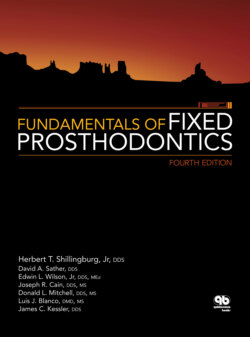Читать книгу Fundamentals of Fixed Prosthodontics - James C. Kessler - Страница 83
Mechanical anterior guidance
ОглавлениеThe guidance of mandibular movement imparted by the anterior teeth also can be recorded on this instrument with a mechanical incisal guide. The mounted casts are examined. Any interferences that prevent the anterior teeth from remaining in contact in all excursions are removed from the casts. Any inadequacies in the guidance are restored by building up an optimum configuration in a diagnostic wax-up.
The lock nut under the incisal table at the front end of the lower member of the articulator is loosened. The incisal pin should be in contact with the incisal table.
The casts are protected from undue abrasion by lubrication of the contacting surfaces with petrolatum. The upper member of the articulator is gently moved back to bring the maxillary and mandibular teeth into an end-to-end position. The incisal pin will be lifted off the incisal table. The incisal guide is rotated to raise it posteriorly until it makes contact with the pin (Fig 5-75a). The lock nut is tightened to maintain this inclination of the table.
The casts are moved into a right lateral excursion. The pin will move to the left side and will again be lifted off the table. The small thumb nut under the left side of the table is loosened, and the elevating screw is used to raise the left wing of the table into contact with the corner of the guide pin (Fig 5-75b). The process is repeated by moving the casts into a left lateral excursion. The right wing of the incisal table is raised to contact the pin (Fig 5-75c).
